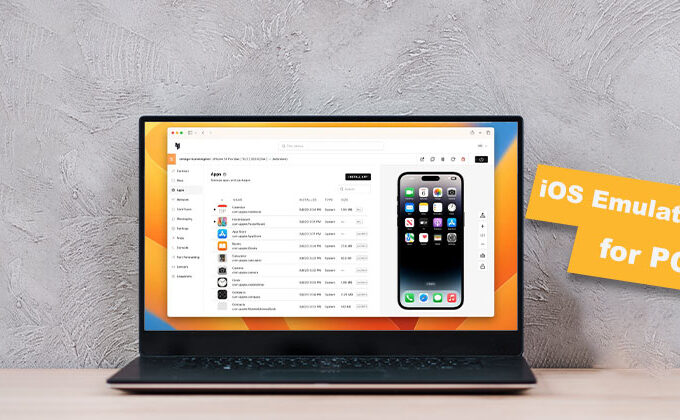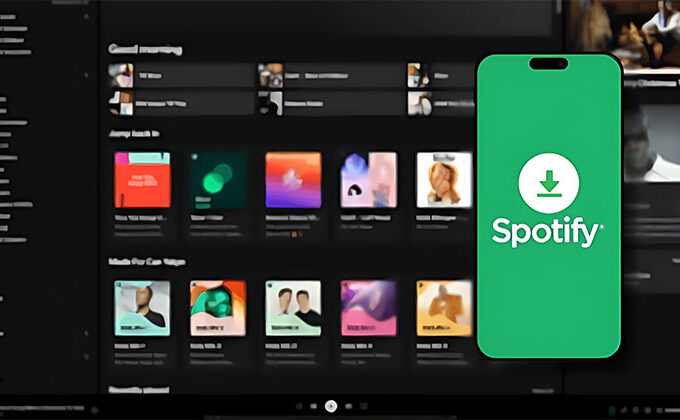Best MSP software lets you monitor the performance of your client systems, Automate routine maintenance tasks like backups and patches, and react to problems faster, without having to manage disconnected tools.
In the event that your employees are getting bogged down in tickets, not receiving important alerts, or managing updates across several clients, it’s an indication that you’ve grown out of the current system. Common problems like unreliable monitoring, inconsistent reporting, and tools that aren’t scalable tend to be the main reasons for MSP software to search for a better system.
My experience includes working with MSPs that support SMBs and larger enterprises and have tested these platforms in real-world deployments, to discover what can be improved in terms of performance and visibility.
This guide will explain how to use the MSP software that provides solid automation, clear interfaces and workflows that help your team work.
What Is MSP Software?
MSP software is a tool that helps managed service companies (MSPs) manage, monitor, and provide support to clients’ technology infrastructure via a centralised platform. System administrators, IT service providers and network managers generally use these tools to automate tasks that reduce downtime and improve the quality of service.
A remote monitoring system, the ticketing software, and automated patching aid in maintaining the health of your system, resolving issues swiftly, and increasing the clients’ satisfaction . All in all, MSP software helps businesses manage multiple client environments effectively while reducing manual labor.
10 Best MSP Software
1. Atera
Atera is a complete IT management system designed by managed service suppliers (MSPs) and internal IT teams that require total visibility across all devices, customers, and users. It is a combination of remote monitoring and Management (RMM) or professional services automation (PSA) within one platform, while providing ticketing automation, automated and asset management functions.
Pros:
- Centralized inventory for network assets
- Real-time CVE vulnerability scanning
- Auto-discovery of devices
Cons:
- Some features require separate add-ons
- Customization options may feel limited
Also read: What Are Cloud Managed Data Center Services? Benefits & How to Choose
2. Syncro
Syncro provides an innovative Extended Monitoring and Management (XMM) platform specifically designed for mid-sized MSPs and IT departments within internal IT. The platform unified incorporates RMM (endpoint management) and professional services automation (PSA) and Microsoft 365 multi-tenant management to aid organizations in reducing their operations, improving security, and growing profitably.
Pros:
- Comprehensive feature set that integrates RMM, PSA, and M365 management
- Good automation features
- Efficient billing and invoicing system
Cons:
- Could offer more report customization options
- Mobile app lacks some functionalities available in the desktop version
3. PowerDMARC
PowerDMARC can be described as an authentication for email. It is a SaaS platform that is suitable for MSPs and MSSPs, designed to automate and simplify the domain name security management for multiple clients on one platform.
PowerDMARC provides a multi-tenant self-service control panel, with support for several languages, which makes it perfect for MSP software that manages several clients. This feature lets you oversee and control multiple domains with ease by providing a single overview of clients’ status for email authentication.
Pros:
- RUF report encryption
- Predictive threat intelligence analysis
- Multi-tenancy and multi-language support
Cons:
- Needs support for complex setup and troubleshooting
- More advanced solutions may have a steep learning curve
4. LogicMonitor
LogicMonitor provides a comprehensive monitoring capability to monitor IT infrastructures, including automated systems and AI-driven insights that help MSPs in detecting issues before they affect their customers.
I like the fact that LogicMonitor is compatible with both private and public cloud infrastructure and on-premises or hybrid environments. It supports multi-tenancy, which allows MSP software to monitor and manage several clients from one dashboard. It is possible to create custom dashboards with templates that are pre-built for each client to provide a greater visual and personal experience.
Pros:
- Can monitor productivity tools like Zoom and Slack
- Logs and metrics to track performance
- Comprehensive support and training resources
Cons:
- Some users report issues with customer support response times
- Can be complex to set up and configure for specific environments
5. Pulseway
With Pulseway, it is possible to monitor all your systems and applications in real-time. This allows for increased visibility and control over your IT infrastructure.
I love that Pulseway’s live-time monitoring permits continuous tracking of the efficiency and condition of devices, such as the use of CPUs, memory, disk space, and network usage, and many more. Pulseway’s monitoring capabilities extend to cloud services, web application services, and network devices.
Pros:
- Remote access and control capabilities
- Multi-platform support
- Mobile-first design
Cons:
- No built-in backup and recovery options
- Limited integrations with third-party applications
6. Inuvika OVD Enterprise
Inuvika The OVD Enterprise platform is an application virtualized and desktop delivery platform that is designed to help managed service providers (MSPs) in providing reliable, scalable, and affordable services.
I selected Inuvika OVD Enterprise because it’s specifically designed for MSP software with native multi-tenancy, which allows you to manage multiple clients from the same environment. It is also possible to white-label the platform, making it easier to use your own or your clients’ branding. Resource containerization makes it easier to accommodate more users per server, making things affordable.
Pros:
- Unified access to Windows and Linux applications
- Zero Trust security model with built-in 2FA
- Fast deployment and easy upgrades
Cons:
- Limited third-party integrations
- Minimum user requirement for on-prem
7. ConnectWise
ConnectWise is a well-known MSP software for its capabilities to automate, which improve MSP workflows and increase efficiency.
I like the fact that ConnectWise offers tools for tracking time, CRM, invoicing and billing to streamline the process of billing. Additionally, it has an automated ticketing system that can handle clients’ problems. It combines problems with regard to phone, email and live chat, and provides automated escalations.
Pros:
- Mobile app available
- Can automate repetitive workflows
- Can create and maintain a knowledge base
Cons:
- Setup can be complex
- Certain customization options are limited
8. N-able
Cloud-based application that helps MSPs monitor, manage, and protect their customers’ IT infrastructure from an integrated platform.
As companies grow and expand, they need IT resources to handle security, networks, and backupswhich N-able offers. I have included N-able in this list due to the fact that it provides an entire range of IT services. It can automatically identify and identify customer networks, carry out patch management, and lower the possibility of data loss with backup and recovery tools.
Pros:
- Customizable reports
- Protect networks with DNS filtering
- Identify and combat advanced endpoint threats with AI
Cons:
- Workflow automation can be clunky
- Limited support for non-Microsoft environments
9. IBM
IBM’s Managed Security Services Provider (MSSP) programme has been created to deal with the changing threats and assist businesses in building a solid security position.
I selected IBM’s MSSP program due to its powerful capabilities for detecting threats as well as investigation and response. You can use its collection of security-related technologies, such as security orchestration, automation, and reaction (SOAR) and security information and event management (SIEM), and the network detector and response (NDR), to improve the speed of incident response.
Pros:
- Strong focus on compliance and regulations
- In-depth analytics on incidents, attacks, and breaches
- Identity and access management solutions are available
Cons:
- IBM’s vast solutions make choosing the right one challenging.
- May require advanced technical expertise to implement
Also read: Best Email Management Software 2025: Top 10 Picks for Businesses
10. SuperOps
SuperOps is a PSA (professional automated services) platform specifically designed for MSPs to allow them to easily manage projects, clients, and resources at one time.
I like SuperOps’s comprehensiveness. Management and monitoring remotely, a service catalog and asset management, custom dashboards and integrated security solutions – SuperOps is all of it. SuperOps also features a modern service desk that can deal with issues and tickets.
Pros:
- Time tracking available
- Runbooks for quicker technician onboarding
- Can do project management and collaboration
Cons:
- Limited mobile app functionality
- Limited integrations
How to Choose MSP Software
You can easily get lost with long lists of features and intricate pricing structures. For you to stay on track while you go through your own unique choice an MSP software, here’s a list of important things to keep in mind:
- Define Your Needs: Decide if you need RMM, PSA, or an all-in-one solution.
- Check Core Features: Look for monitoring, ticketing, billing, automation, security, and integrations.
- Ease of Use: User-friendly interface, quick onboarding, and mobile access.
- Scalability: Multi-tenant support and fair pricing models that grow with you.
- Security & Compliance: Encryption, MFA, and compliance-ready reporting.
- Vendor Support: 24/7 help, community forums, and regular updates.
- Pricing Models: Compare per-device, per-user, or flat-rate options
Conclusion
MSP software helps manage clients better by automating a variety of daily tasks. This includes everything from monitoring your network’s performance to tracking software licenses and managing requests.
By using the help of an MSP solution, you’ll also minimize the risk of data loss and downtime because the software will detect and fix issues on its own. I hope that this list of the top MSP software will help you choose the best solution for your company.















Leave a comment